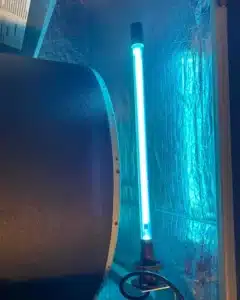Choosing the Right AC System for Your Home’s Size
Choosing the right air conditioning system for your home is...
Investing in a new HVAC (Heating, Ventilation, and Air Conditioning) system is a significant decision that directly impacts the comfort of your home. Knowing what to expect during the installation process is crucial for a smooth and successful transition. In this article, we will provide a factual overview of the HVAC installation process, outlining key steps to help homeowners understand what happens when a new system is being installed.
Before the installation begins, a thorough assessment of your home and existing HVAC setup is conducted. This includes evaluating the size of your home, insulation levels, and any specific requirements based on your heating and cooling needs. The assessment helps determine the most suitable HVAC system for your property.
Based on the assessment, the HVAC specialist will recommend a system that aligns with your home’s size and requirements. Proper sizing is crucial for optimal performance and energy efficiency. Undersized or oversized units can lead to inefficiencies and potential issues down the line.
Once the appropriate system is selected, the installation team develops a detailed plan. This includes deciding on the best location for the indoor and outdoor units, planning for ductwork if applicable, and ensuring all necessary components are available for a smooth installation.
If you are replacing an existing HVAC system, the first step is the removal of the old equipment. This involves disconnecting the existing unit, safely disposing of it, and preparing the space for the installation of the new system.
The indoor and outdoor units of the HVAC system are then installed. For central air systems, this may involve setting up the furnace or air handler indoors and placing the condenser unit outdoors. Ductless systems typically require the installation of indoor air handlers in each zone.
For homes with ducted systems, the installation team will either set up new ductwork or inspect and optimize the existing ducts. Properly designed and sealed ductwork is crucial for the efficient distribution of air throughout your home.
Connecting the HVAC system to the electrical supply is a critical step. This includes wiring the indoor and outdoor units, thermostat, and any additional components. All electrical connections must comply with safety standards to ensure the system’s reliable and safe operation.
After the physical installation is complete, the system undergoes thorough testing. This includes checking for proper airflow, refrigerant levels, and the functionality of all components. The thermostat is calibrated to ensure accurate temperature control.
Once the installation is finalized, the HVAC specialists will provide you with information about your new system. This may include how to operate the thermostat, change filters, and any routine maintenance tasks. Understanding the basics of your system helps you maximize its efficiency and lifespan.
Before leaving your home, the installation team conducts final checks to ensure everything is in working order. They also clean up the work area, removing any debris or packaging materials.
Understanding what to expect during the HVAC installation process empowers homeowners to make informed decisions and ensures a seamless transition to a new and efficient heating and cooling system. From the initial assessment to final system checks, each step is crucial for the long-term performance of your HVAC investment. By partnering with reputable HVAC professionals, you can trust that the installation process will be conducted with precision and attention to detail, leaving you with a reliable and comfortable home environment.

Choosing the right air conditioning system for your home is...

Indoor air quality is a critical factor in maintaining a...

Maintaining clean and healthy indoor air is increasingly important, especially...

Maintaining the right level of humidity in your home can...

Air conditioning is essential in Florida’s hot and humid climate,...

Air conditioning is critical in Florida’s hot and humid climate....